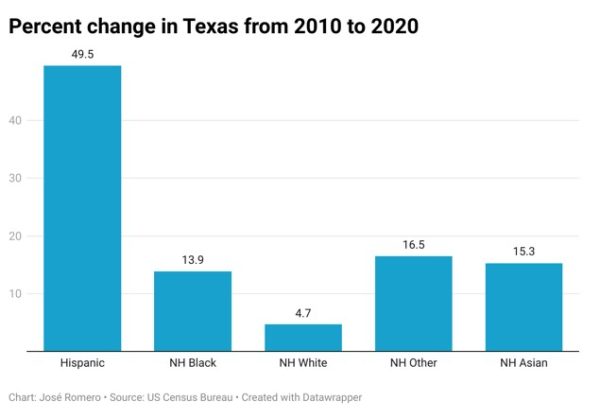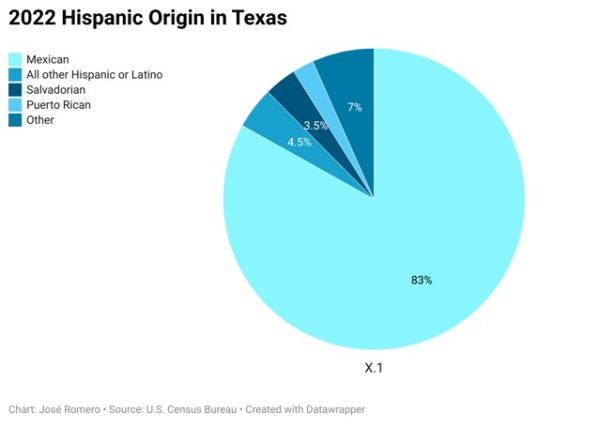ARLINGTON, Texas—One of the most notable trends revealed by the 2020 Census data is the substantial growth of Texas’ Hispanic population.
With Hispanics accounting for half of Texas’ overall population growth, the demographic landscape is undergoing a transformation that reverberates across various sectors of society, including the business community.
The surge in the Hispanic population has profound implications for businesses, both small and large, within Texas communities. As Hispanic communities expand and become increasingly integral to the state’s economic fabric, businesses are adapting their strategies to meet the needs and preferences of this growing demographic.
Texas’ Hispanic population surged by nearly 2 million people over the past decade, according to the 2020 Census data. This represents a 20% increase from the 2010 Census figures and underscores the significant demographic shift occurring within the state.

In fact, Hispanics now make up 39.3% of Texas’ total population, nearing parity with non-Hispanic whites, who comprise 39.8%.
Small businesses in particular are tapping into the burgeoning Hispanic market by offering products and services tailored to their cultural preferences. From Hispanic-owned grocery stores and restaurants to specialized services such as bilingual marketing and legal assistance, they’re seizing the opportunity to cater to the needs of their Hispanic clientele.
According to data from the U.S. Census Bureau’s Survey of Business Owners, the number of Hispanic-owned businesses in Texas increased by 34.8% between 2007 and 2012, outpacing the national average growth rate of 46.3% for Hispanic-owned businesses during the same period. These businesses span a wide range of industries, including construction, healthcare, and professional services.
While small businesses play a vital role in serving Hispanic communities, larger corporations are also recognizing the importance of diversity and inclusion in their operations. Many companies are implementing diversity initiatives aimed at attracting and retaining Hispanic talent, as well as fostering a more inclusive workplace culture.
Larger corporations are investing in targeted marketing efforts to reach Hispanic consumers effectively. These efforts include culturally relevant advertising campaigns and Spanish-language customer service support. Companies are increasingly recognizing the importance of connecting with Hispanic consumers on a meaningful level.
Visualizations derived from both the Census data and the crowdsource poll offer valuable insights into the impact of Texas’ Hispanic population growth on businesses of all sizes. These visual representations serve as tools for understanding the changing dynamics of the Texas business landscape and identifying opportunities for future growth and innovation.
The 2020 Census data highlights the significant growth of the Hispanic population in Texas and its far-reaching implications for businesses within communities.
From small businesses catering to the needs of Hispanic consumers to larger corporations embracing diversity and inclusion, Texas businesses are adapting to capitalize on the opportunities presented by the state’s changing demographic landscape. As Texas continues to grow and evolve, businesses will play a critical role in driving economic prosperity and fostering a more inclusive society for residents.









































